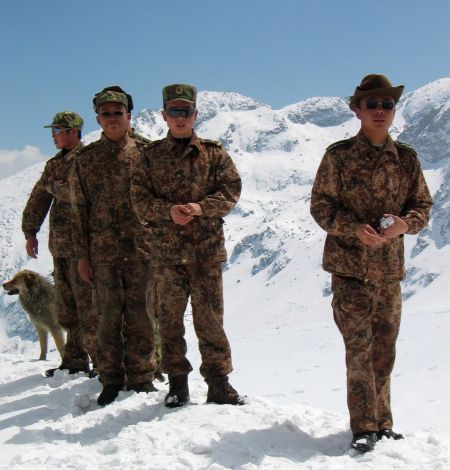Last two months or so have seen the Chinese PLA (Peoples Liberation Army) provoke India on the border. Easily the Doklam incident is the most serious of the lot and remains still unresolved. Undoubtedly, India took initiative to stop the road construction. But the initial provocation was by the Chinese. After this there have been minor incidents on the UP-Tibet and Himachal Pradesh-Tibet border as well.
These incidents cannot be brushed aside as ‘routine’ because for the first time Chinese have begun to dispute even the settled boundary, so far the incidents were confined to Ladakh, where there is an undefined LAC (Line of Control) or Arunachal Pradesh, which China lays claims to. Thus it can be seen as a new attempt to open up the entire Sino-Indian border for dispute.
Unlike the LOC (Line of Control) with Pakistan where border tensions are routine, these segments of Sino Indian border were dormant for several decades. In case of India-Pak, many times the tensions arise out of local initiative, but in case of a tightly controlled Chinese Army, this is unlikely. All this leads to the conclusion that there is larger design behind these events and strategic purpose.
Chinese past behaviour offers some clues to this seemingly unexplained moves. A deeper study of the 1962 Sino-Indian conflict reveals that the time line of major events of that brief war closely followed the ongoing Cuban Missile Crisis.
Dispute over Aksai Chin area had been simmering since 1960, but broke out into open conflict only in Oct 1962. The co-ordinated Chinese attack over a distance of 1000 kms, from Chip Chap valley in the North to Namkachuriver in the East, on 20 Oct 1962 coincided exactly with the American naval blockade of Cuba two days later.
It is difficult to believe that China, then a staunch ally of the erstwhile USSR did not have prior knowledge of the Soviet adventure in Cuba. But even more telling sign of the Chinese opportunism was the fact that the day the Cuban Missile Crisis got over on 21 Nov 1962, China declared a unilateral ceasefire and announced its withdrawal from captured areas in Arunachal Pradesh (then NEFA or North East Frontier Agency). This was done with the full knowledge that once the Cuban crisis was over the US was likely to come to India’s aid (it nearly did when it had alerted its strategic bomber aircraft in Philippine bases to fly to India).
So what event has prompted the present bout of Chinese risk taking? The one word answer to that is ‘Trump Effect’. Ever since his election in Nov and inauguration in January, the US government is on a limbo.
Trump is not your typical Republican President and therefore did not have the ready appointees for thousands of job vacancies that have to be filled up in the giant Federal bureaucracy. Forget other departments, his own White House has seen revolving door appointments for crucial positions like NSA (National Security Advisor) or even White House press secretary. Instead of a structured government, Mr. Trump has taken to using twitter to communicate his policies and views. The State Department is woefully staffed with just the Secretary, with positions like undersecretary or deputy secretary lying vacant.
Mr. Trump has rubbished the role of ‘experts’ in all fields (with the exception of the military) and has instead appointed weird individuals like fashion designers or hoteliers to deal with complex world issues. The US, the world’s predominant military, economic and technological power is headless. It is this opportunity that the Chinese seemed to have seized.
The chaos in the US is not a matter of accident but a part of Mr. Trump’s design wherein he feels that he has all the answers and needs no experts to advise. The US Congress, the house of representatives as well as Senate seems to be getting ready to fill in the void. The US constitution offers sufficient flexibility to do so. But the process of power shift from the President to the US Congress is going to be messy, unpredictable and long drawn. All this while the world will experience power vacuum. It is this situation of distracted US that China seeks to exploit.
Given the international situation and American internal dynamics that includes a dogged Mr. Trump as a President, one should expect an aggressive China for some time. India has to be militarily and diplomatically ready for this period of turmoil.






India need not depend on Trump. India has Nukes and India must take out Pakistan first and then unleash the rest on China. And be prepared to go down. We will not win but we will destroy our enemies completely. That is what India must do. China can puish its luck and find out the hardway. Indian military must call the shots. Not the politicians.